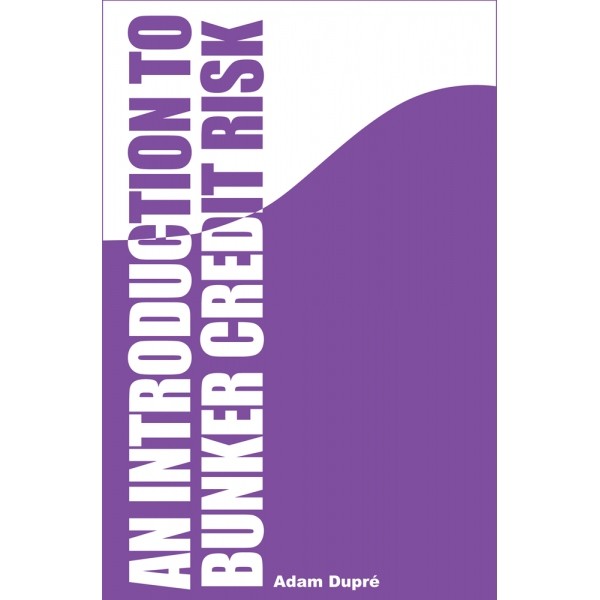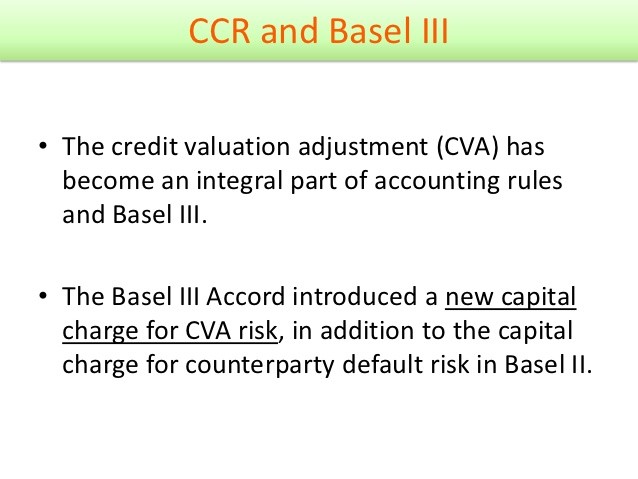Introduction To Counterparty Risk_1
Post on: 6 Июнь, 2015 No Comment

Counterparty risk gained visibility in the wake of the global financial crisis. AIG famously leveraged its AAA credit rating to sell (write) credit default swaps (CDS) to counterparties who wanted default protection (in many cases, on CDO tranches). When AIG could not post additional collateral and was required to provide funds to counterparties in the face of deteriorating reference obligations, the U.S. government bailed them out. Regulators were concerned that defaults by AIG would ripple through the counterparty chains and create a systemic crisis. The issue was not only individual firm exposures but the risk that interconnected linkages via derivative contracts would jeopardize the system.
A Loan Has Default Risk; a Credit Derivative Has Counterparty Risk
Counterparty risk is a type (or sub-class) of credit risk and is the risk of default by the counterparty in many forms of derivative contracts. Let’s contrast counterparty risk to loan default risk. If Bank A loans $10 million to Customer C, Bank A charges a yield that includes compensation for default risk. But the exposure is easy to ascertain; it’s roughly the invested (funded) $10 million.
A credit derivative, however, is an unfunded bilateral contract. Aside from the posted collateral, a derivative is a contractual promise that might be broken, thus exposing the parties to risk. Consider an over-the-counter (OTC) option sold (written) by Bank A to Customer C. Market risk refers to the fluctuating value of the option; if it is daily-mark-to-market, its value will be a function largely of the underlying asset price but also several other risk factors. If the option expires in-the-money, Bank A owes the intrinsic value to Customer C. Counterparty risk is the credit risk that Bank A will default on this obligation to Bank C (for example, Bank A might go bankrupt). (Find out how economic capital and regulatory capital affects risk management. Check out How Do Banks Determine Risk? )
Understanding Counterparty Risk with an Interest Rate Swap Example
Let’s assume two banks enter into a vanilla (non-exotic) interest rate swap. Bank A is the floating-rate payer and Bank B is the fixed-rate payer. The swap has a notional value of $100 million and a life (tenor) of five years; it is better to call the $100 million notional instead of principal because the notional is not exchanged, it is merely referenced to compute the payments.
To keep the example simple, we assume the LIBOR/swap rate curve is flat at 4.0%. In other words, when the banks begin the swap, spot (or zero) interest rates are 4.0% per annum for all maturities.
The banks will exchange payments at six months intervals for the swap’s tenor. Bank A, the floating-rate payer, will pay six-month LIBOR. In exchange, Bank B will pay the fixed rate of 4.0% per annum. Most importantly, the payments will be netted. Bank A cannot predict its future obligations but Bank B has no such uncertainty. At each interval, Bank B knows it will owe $2 million: $100 million notional * 4% / 2 = $2 million.
Let’s consider counterparty exposure definitions at two points in time — at swap inception (T = 0), and six months later (T = + 0.5 years).
At the Start of the Swap (Time Zero = T0)
Unless a swap is off market, it will have an initial market value of zero to both counterparties. The swap rate — the fixed rate — will be calibrated to ensure a zero market value at swap inception.
- The market value (at T = 0) is zero to both counterparties. The flat spot rate curve implies 4.0% forward rates, so the floating-rate payer (Bank A) expects to pay 4.0% and knows it will receive 4.0%. These payments net to zero, and zero is the expectation for future netted payments if interest rates do not change.
- Credit exposure (CE): This is the immediate loss if the counterparty defaults. If Bank B defaults, the resulting loss to Bank A is Bank A’s credit exposure. Therefore, Bank A only has credit exposure if Bank A is in-the-money. Consider an analog to a stock option. If an option holder is out-of-the-money at expiration, default by the option writer is inconsequential. The option holder only has credit exposure to default if she is in-the-money. At swap inception, as the market value is zero to both, neither bank has credit exposure to the other. For example, if Bank B immediately defaults, Bank A loses nothing.
- Expected exposure (EE): This is the expected (average) credit exposure on a future target date conditional on positive market values. Bank A and Bank B both have expected exposure at several target future dates. Bank A’s 18-month expected exposure is the average positive market value of the swap to Bank A, 18 months forward, excluding negative values (because default won’t hurt Bank A under those scenarios). Similarly, Bank B has a positive 18 month expected exposure, which is the market value of the swap to Bank B but conditional on positive values to Bank B. It helps to keep in mind that counterparty exposure exists only for the winning (in-the-money) position in the derivative contract, not for the out-of-money position! Only a gain exposes the bank to counterparty default.
- Potential future exposure (PFE): PFE is the credit exposure on a future date modeled with a specified confidence interval. For example, Bank A may have a 95% confident, 18-month PFE of $6.5 million. A way of saying this is, 18-months into the future, we are 95% confident that our gain in the swap will be $6.5 million or less, such that a default by our counterparty at the time will expose us to a credit loss of $6.5 million or less. (Note: by definition the 18-month 95% PFE must be greater than the 18-month expected exposure (EE) because EE is only a mean.) How is the $6.5 million figured? In this case, Monte Carlo simulation showed that $6.5 million is the upper fifth percentile of simulated gains to Bank A. Of all simulated gains (losses excluded from the results because they do not expose Bank A to credit risk), 95% are lower than $6.5 million and 5% are higher. So, there is a 5% chance that, in 18 months, Bank A’s credit exposure will be greater than $6.5 million.
Does potential future exposure (PFE) remind you of value at risk (VaR)? Indeed, PFE is analogous to VaR. with two exceptions. First, while VaR is an exposure due to a market loss, PFE is a credit exposure due to a gain. Second, while VaR typically refers to a short-term horizon (for example, one or 10 days), PFE often looks years into the future(if the swap tenor is five years, a bank will be interested in PFE up to four or five years). (Learn which tools you need to manage the risk that comes with changing rates. Refer to Managing Interest Rate Risk .)

Go Forward Six Months in Time (T = + 0.5 years)
Let’s assume the swap rate curve shifts down from 4.0% to 3.0%, but remains flat for all maturities so it is a parallel shift. At this time, the swap’s first payment exchange is due. Each bank will owe the other $2 million. The floating payment is based on the 4% LIBOR at the beginning of the six month period. In this way, the terms of the first exchange are known at swap inception, so they perfectly offset or net to zero. No payment is made, as planned, at the first exchange. But, as interest rates changed, the future now looks different — better to Bank A and worse to Bank B (who is now paying 4.0% when interest rates are only 3.0%).
- Current exposure (CE) at time T + 0.5 years: Bank B will continue to pay 4.0% per annum but now expects to receive only 3.0% per annum. Since interest rates have dropped, this benefits the floating-rate payer, Bank A. Bank A will be in-the-money and Bank B will be out-of-the-money.
Under this scenario, Bank B will have zero current (credit) exposure; Bank A will have positive current exposure.
- Estimating the current exposure at six months: We can simulate the future current exposure by pricing the swap as two bonds. The floating-rate bond will always be worth approximately par ; its coupons are equal to the discount rate. The fixed-rate bond, at six months, will have a price of about $104.2 million. To get this price, we assume a 3.0% yield, nine semi-annual periods remaining and a $2 million coupon. In MS Excel the price = PV(rate = 3%/2, nper = 9, pmt = 2, fv = 100); with a TI BA II+ calculator, we input N = 9, I/Y = 1.5. PMT = 2, FV = 100 and CPT PV to get 104.18. So if the swap rate curve shifts in parallel from 4.0% to 3.0%, the market value of the swap will shift from zero to +/- $4.2 million ($104.2 – $100). The market value will be +$4.2 million to in-the-money Bank A and -$4.2 million to out-of-the-money Bank B. But only Bank A will have current exposure of $4.2 million (Bank B loses nothing if Bank A defaults).
In regard to expected exposure (EE) and potential future exposure (PFE), both will be re-calculated (actually, re-simulated) based on the freshly observed, shifted swap rate curve. However, as both are conditional on positive values (each bank includes only the simulated gains where credit risk can exist), they will both be positive by definition. As interest rates shifted to the benefit of Bank A, Bank A’s EE and PFE are likely to go up.
Summary of the Three Basic Counterparty Metrics
- Credit exposure (CE) = MAXIMUM (Market Value, 0)
- Expected exposure (EE): AVERAGE market value on future target date, but conditional only on positive values
- Potential future exposure (PFE): Market value at specified quantile (for example, the 95th percentile) on future target date, but conditional only on positive values
How Are EE and PFE Calculated?
Because derivative contracts are bilateral and reference notional amounts which are insufficient proxies for economic exposure (unlike a loan where the principal is real exposure), in general we must use Monte Carlo simulation (MCS) to produce a distribution of market values on a future date. The details are beyond our scope, but the concept is not as difficult as it sounds. If we use the interest rate swap, four basic steps are involved:
1. Specify a random (stochastic) interest rate model. This is a model that can randomize underlying risk factor(s). This is the engine of the Monte Carlo Simulation. For example, if we were modeling a stock price, a popular model is geometric Brownian motion. In the example of the interest rate swap, we might model a single interest rate to characterize an entire flat rate curve. We could call this a yield.
2. Run several trials. Each trial is a single path (sequence) into the future; in this case, a simulated interest rate years into the future. Then we run thousands more trials. Figure 1 below is a simplified example: each trial is a single simulated path of an interest rate plotted ten years forward. Then the random trial is repeated ten times.














